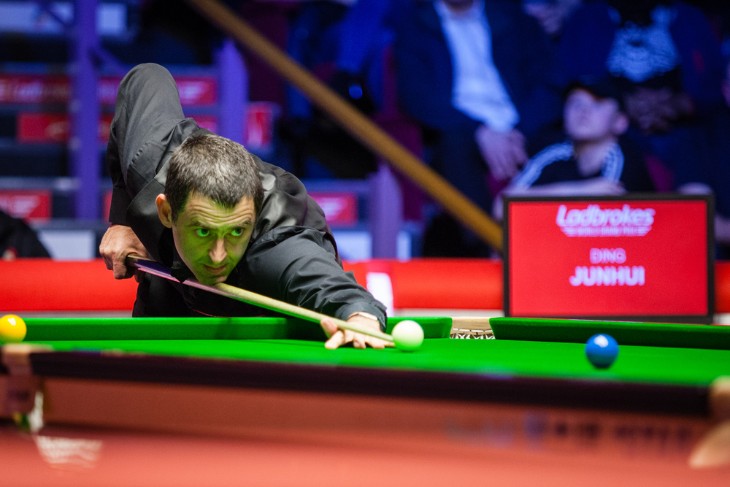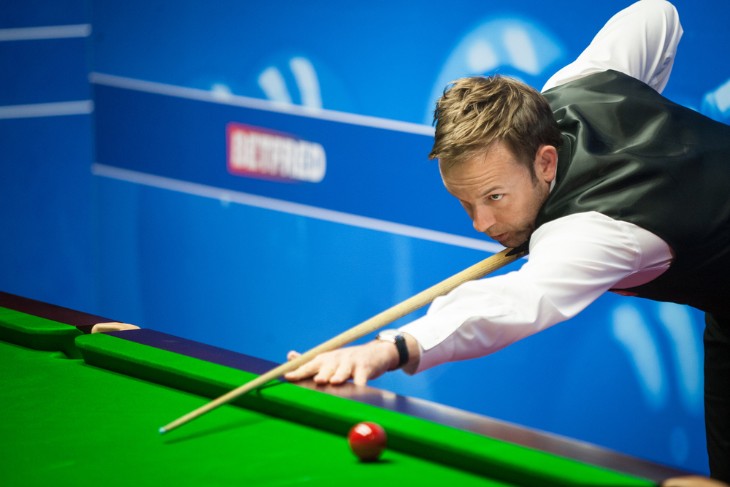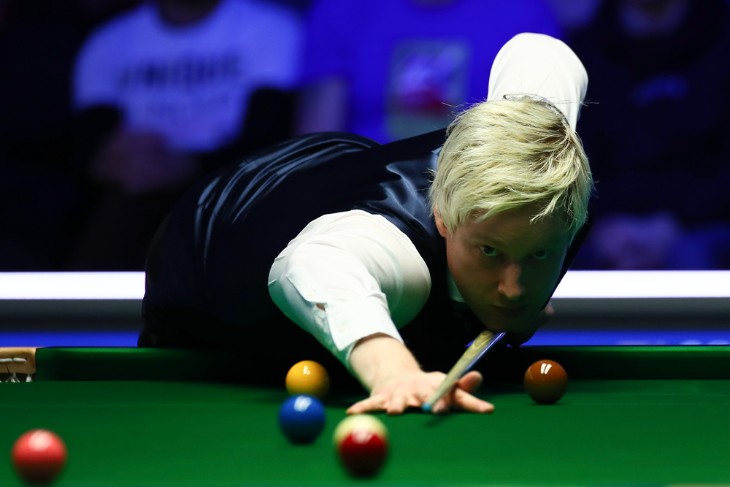- Situations Leading to a Free Ball Scenario
- Strategies for Maximising Advantage from a Free Ball
- Common Mistakes to Avoid in Free Ball Situations
- Free Ball Tactics: Insights from Professional Players
- Comparing Snooker and Pool: The Free Ball Difference
- Role of Referees in Enforcing Free Ball Situations
- Teaching Free Ball Techniques in Snooker Academies
- Conclusion
A 'free ball' situation in snooker is a rule invoked following a foul when the non-offending player cannot hit both sides of any of the 'on' balls. In simpler terms, if a player commits a foul and leaves their opponent snookered – unable to directly hit both sides of any legal object ball – the referee may declare a free ball. This rule is crucial as it provides a fair chance for the non-offending player to continue the game without being unduly disadvantaged by their opponent's foul.
In a free ball scenario, the non-offending player is allowed to nominate any other ball as the 'ball on'. This effectively means they can choose a ball, other than the one they are snookered behind, to pot as if it were the legal object ball. If they successfully pot this nominated ball, they score points equivalent to the value of the actual ball 'on' and continue their turn. However, it's important to note that while the nominated ball temporarily takes on the role of the object ball, the actual object ball remains 'on' for the subsequent shot. The application of this rule demands not only a deep understanding of the game's mechanics but also strategic acumen to turn the situation to one's advantage.
Situations Leading to a Free Ball Scenario
A free ball in snooker is a crucial turning point in a frame, often resulting from specific situations. The most common scenario leading to a free ball is a foul where the offending player leaves the cue ball in a position where their opponent cannot directly hit both sides of any 'on' ball. Such situations can arise inadvertently, such as when a player fails to escape a snooker, or deliberately, through a strategic safety shot gone awry. Understanding how these situations occur is key to both avoiding them as a player and exploiting them as an opponent.
Another less common but possible scenario for a free ball arises when a player pots a ball but simultaneously commits a foul, like potting the cue ball. In this situation, if the incoming player is snookered on all 'on' balls, the referee may declare a free ball. The key to understanding "how do you get a free ball in snooker" lies in recognising these situations and the strategic implications they hold. Players must be mindful of their shot selections and the potential repercussions they carry in terms of leaving their opponent a free ball opportunity.
Strategies for Maximising Advantage from a Free Ball
Capitalising on a free ball situation requires strategic thinking and precise execution. When presented with a free ball, the player has the opportunity to nominate any colour as a red, which, if potted, allows them to continue their break. This presents a unique opportunity to compile points and gain a significant advantage in the frame. Therefore, selecting the right ball to nominate as the 'free ball' is critical. Players often choose a ball that is positioned favourably for potting and for setting up the next shot, ideally on a high-value colour.
Beyond the immediate potting opportunity, players must think several shots ahead. Effective use of a free ball often involves planning the subsequent positional play to maintain control of the table. This includes considering the angles for potting the next red, positioning for subsequent colours, and potentially developing a strategy to build a substantial break. Mastering the art of utilising a free ball not only involves technical skill but also an advanced understanding of snooker strategy and cue ball control. The players who excel in these situations are often those who can foresee the potential run of the balls several shots in advance.

Common Mistakes to Avoid in Free Ball Situations
Navigating a free ball situation in snooker requires not just skill but also a keen awareness of potential pitfalls. One common mistake is poor selection of the nominated free ball. Players, especially those less experienced, might choose a ball based solely on its ease of potting, neglecting the strategic positioning for subsequent shots. This short-sighted approach can lead to a breakdown in the break, missing the opportunity to maximise points. A comprehensive understanding of the table layout and potential ball paths is essential to avoid such errors.
Another frequent error occurs in the execution of the shot following the free ball. Players may successfully pot the nominated ball but fail to position the cue ball effectively for the next shot, especially when trying to return to the reds. This failure can stem from a lack of precision in cue ball control or an underestimation of the table's dynamics. Mastery in snooker is not just about knowing "how do you get a free ball in snooker"; it also involves executing subsequent shots with precision and foresight, turning a momentary advantage into a game-winning opportunity.
Free Ball Tactics: Insights from Professional Players
Professional players often provide valuable insights into the tactical aspects of utilising a free ball in snooker. These players highlight the importance of not just potting the nominated ball, but also strategically planning the subsequent shots. A common tactic among professionals is to use the free ball situation to gain positional advantage for future shots. This often involves nominating a ball that not only offers an easy pot but also sets up the player for a favourable position on the next red, thereby potentially initiating a substantial break.
Another key strategy shared by professionals is the use of the free ball to disrupt the opponent's rhythm. By carefully choosing which ball to nominate and successfully potting it, a player can extend their time at the table, thereby keeping their opponent seated and out of the game flow. This psychological aspect is crucial in higher levels of play. The question of "how do you get a free ball in snooker" is not just about the rules; it's also about understanding and exploiting the tactical and psychological dimensions of the game, as emphasised by seasoned professionals.
Comparing Snooker and Pool: The Free Ball Difference
Snooker and pool, while similar in some aspects, differ significantly in rules and gameplay, particularly in the concept of a free ball. In pool, there is no equivalent to the free ball rule in snooker. This distinction highlights the unique strategic elements inherent in snooker. In pool, the focus is more on potting balls in a set order (in games like 8-ball or 9-ball), without the complexities of snooker's foul and miss rules. The absence of a free ball situation in pool leads to a different style of play, where players are less likely to be penalised for leaving their opponent without a direct shot after a foul.
Understanding the free ball rule is integral to appreciating the strategic depth of snooker. The rule adds an additional layer of complexity and opportunity that is not present in pool. This distinction often makes snooker a more strategically demanding game, requiring players to think several shots ahead and be aware of the potential for a free ball scenario. The comparison between the two cue sports illuminates why snooker is often regarded as more challenging and why mastering the answer to "how do you get a free ball in snooker" is crucial for success in the game.

Role of Referees in Enforcing Free Ball Situations
Referees play a pivotal role in the enforcement of the free ball rule in snooker. Their primary responsibility is to ensure that a free ball situation is correctly identified and handled. This involves a keen observation of the game, specifically assessing whether a player is snookered after a foul. The referee must determine if the non-offending player cannot hit both sides of any 'on' ball directly. This judgement requires an acute understanding of the game’s rules and a sharp eye for the positioning of balls on the table.
In addition to identifying free ball situations, referees also oversee the proper execution of the rule. This includes ensuring that the non-offending player nominates a specific ball as the free ball and that this nomination is clearly communicated. The referee's role is crucial in maintaining the integrity and fairness of the game, especially in professional matches where the stakes are high. Their decisions can significantly influence the outcome of a frame, highlighting the importance of experienced and knowledgeable referees who can aptly handle the question, "how do you get a free ball in snooker?"
Teaching Free Ball Techniques in Snooker Academies
In snooker academies, where the sport is taught systematically, the concept and tactics of the free ball are given significant attention. Coaches emphasise not only the basic rule but also the strategic approaches to maximising the advantage from a free ball situation. Trainees are taught to assess the table layout critically, considering factors like the positions of the balls, potential for subsequent shots, and the scoreline. This holistic approach to understanding a free ball scenario is crucial for developing players who can think and act strategically under pressure.
Practical sessions in these academies often include simulated free ball situations, allowing trainees to experience and navigate these scenarios firsthand. These exercises are designed to improve decision-making skills, cue ball control, and positional play. The aim is to equip aspiring snooker players with the tools they need to answer the question, "how do you get a free ball in snooker?" and to use it to their advantage. Through structured training and practical experience, players learn to see a free ball not just as a rule, but as an opportunity to gain a tactical edge in the game.
Conclusion
In conclusion, the free ball is a fundamental aspect of snooker that significantly impacts the strategy and outcome of the game. It presents an opportunity for players to turn a potentially disadvantageous situation into one of strategic gain. The ability to effectively utilise a free ball can be the difference between winning and losing a frame, and by extension, a match.
For more information:




.webp)


 (1).webp)




















